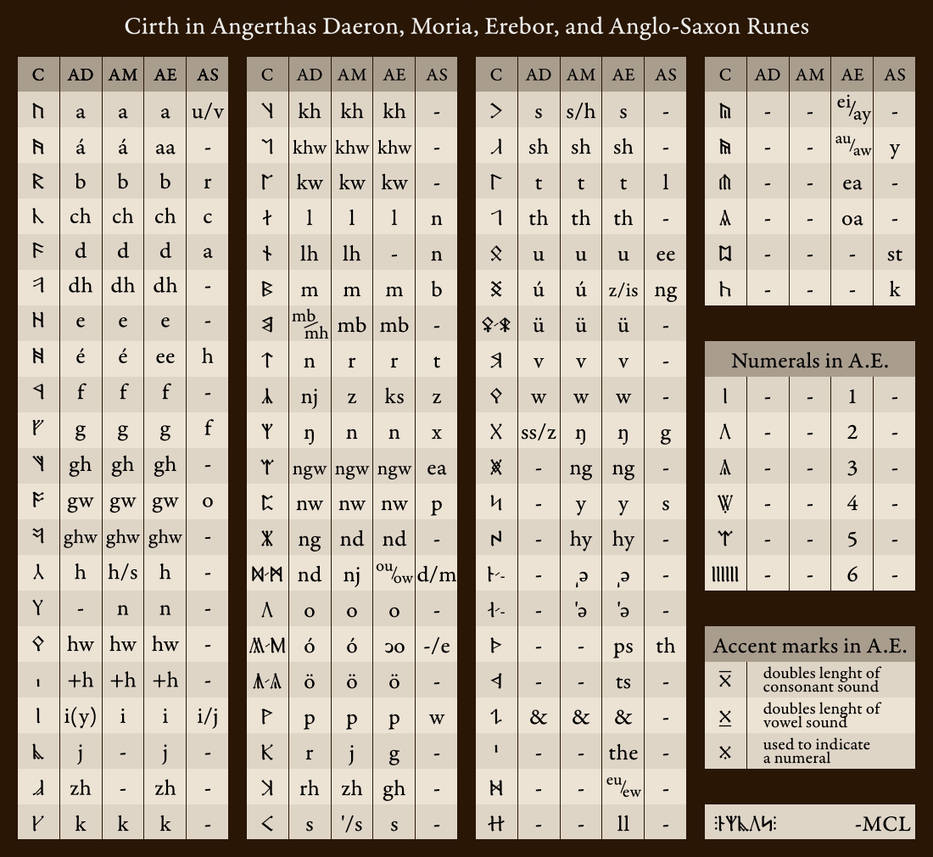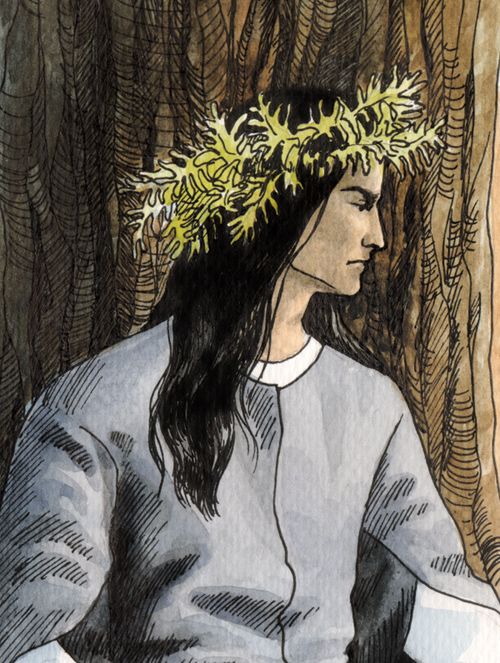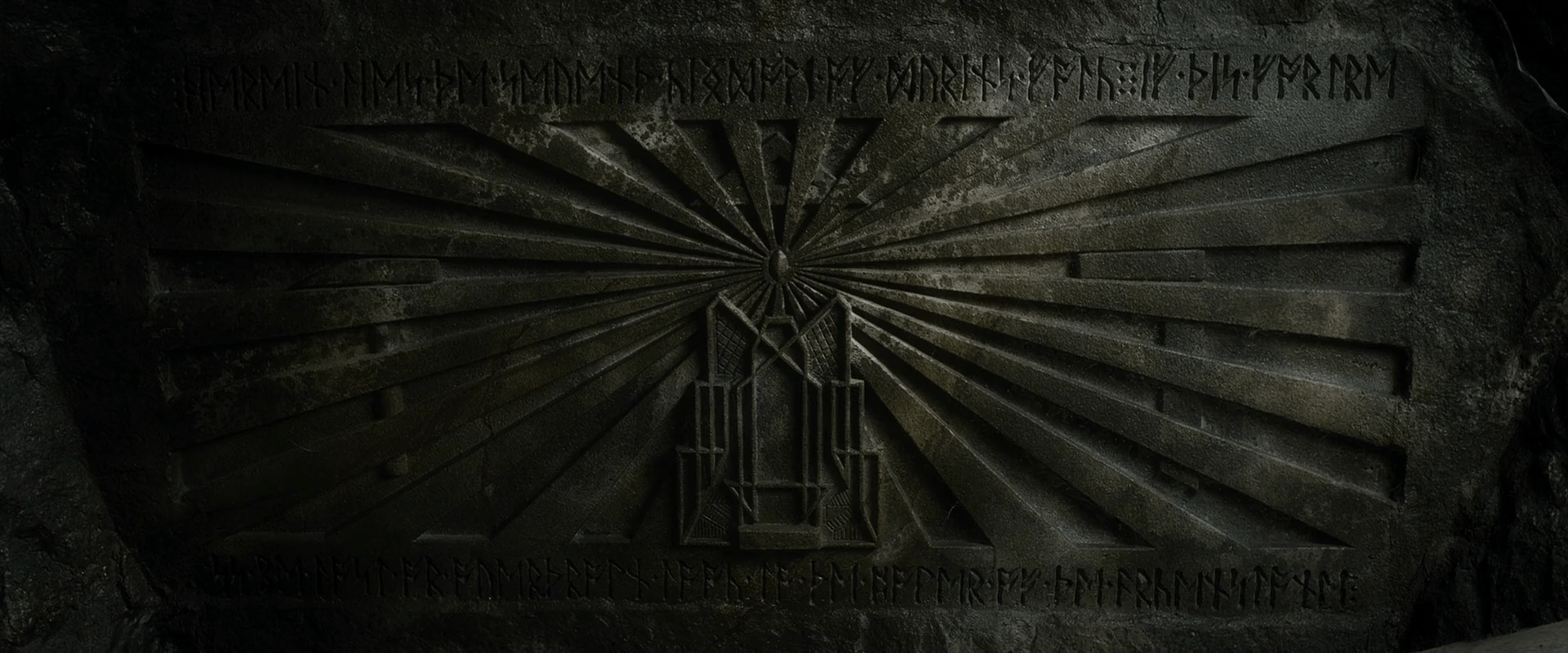Cirth
The original Certhas Daeron, known in short as the Cirth, was the script of runes created by Daeron, the minstrel of king Thingol of Doriath and was later expanded into what was known as the Angerthas Daeron. Although the Cirth were later largely replaced by the Tengwar (which were enhanced and brought by Fëanor), they were adopted by Dwarves to write down their Khuzdûl language (Angerthas Moria and Angerthas Erebor) because their straight lines were better suited to carving than the curved strokes of the Tengwar. Some examples of Cirth writings are the inscription on Balin's tomb in Moria and the inscriptions on the top of the title pages for The Lord of the Rings. The black helm of the Dark Lord Sauron's ambassador and lieutenant, the Mouth of Sauron had Cirth runes that was translated to "Voice of the Abhorred Dead".
Lees meerMore cirth
Cirth is plural and is written with a capital C when referring to the writing system— the runes themselves can be called cirth. A single rune is a certh.
Many letters have shapes also found in the historical Futhark runes (used in The Hobbit), but their sound values are only similar in a few of the vowels. Rather, the system of assignment of sound values is much more systematic in the Cirth than in the historical runes (e.g., voiced variants of a voiceless sound are expressed by an additional stroke). A similar system has been proposed for a few historical runes (e.g. p ᛈ and w ᚹ as variants of b ᛒ), but is in any case much more obscure.

Daeron
Daeron (also spelled "Dairon") was a Sindarin elf of Doriath and King Thingol's loremaster and minstrel. Because of his love for Lúthien, he was jealous of Beren One-hand, and was a key figure in the betrayal of their love to Thingol.
Daeron was a brilliant loremaster and was the greatest musician in Middle-earth. Second to him was Maglor, one of Feanor's sons.
Lees meer
